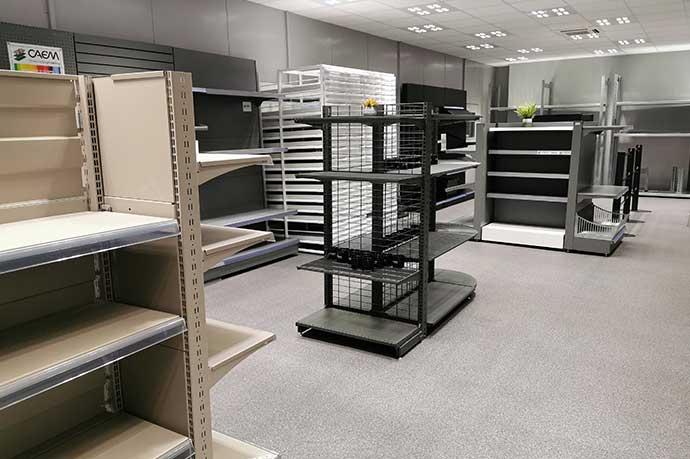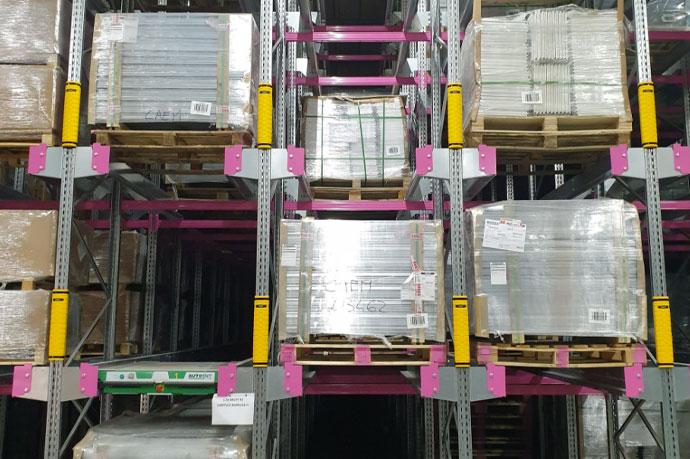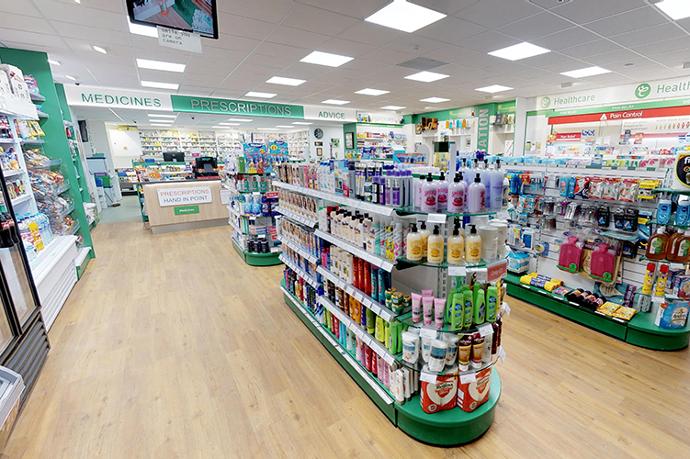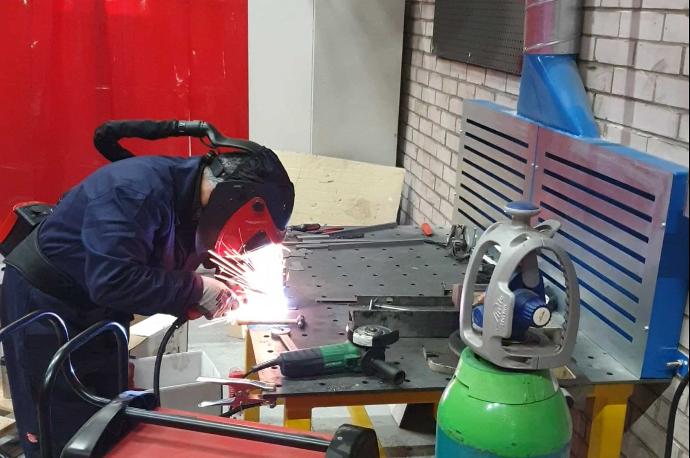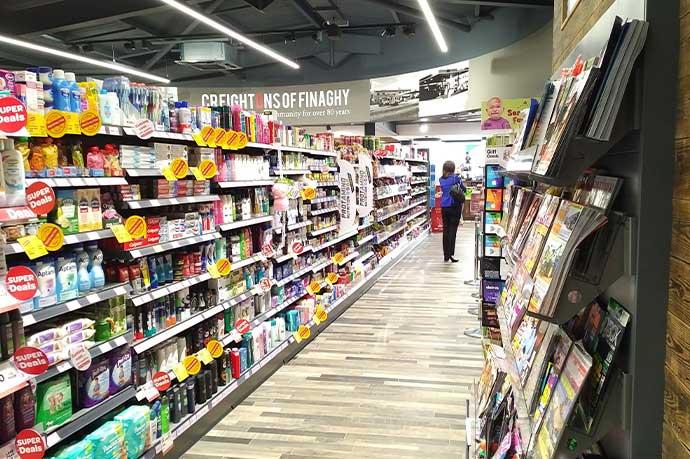Imagine walking into a pet store where every product is not only within reach but also beautifully displayed. The right shelving can transform a retail space, creating an inviting atmosphere that captivates customers and enhances their shopping experience. Pet store shelving plays a pivotal role in both aesthetics and functionality, impacting everything from sales to customer satisfaction. This article will delve into the essentials of effective shelving solutions, offering insights and strategies to ensure your pet store stands out and thrives in the competitive retail landscape.
Understanding Pet Store Shelving: Essentials for Success
The Importance of Effective Shelving in Pet Retail
Effective shelving in pet retail isn't just about holding products; it's about creating an environment that draws customers in and keeps them engaged. Well-organized shelves make products easily accessible and visually appealing, which is crucial for attracting attention and encouraging longer visits. Studies show that food and treats constitute the largest product segment for pet stores, with a growing trend towards all-natural and organic offerings. This shift highlights the need for versatile shelving that can accommodate diverse product lines while aligning with the store's brand and aesthetic.
Key Considerations for Shelving Choices
When selecting shelving for a pet store, several key considerations come into play. Durability and strength are paramount, given the variety of product weights and sizes—from hefty bags of dog food to delicate fish tanks. Flexibility in shelving systems is also crucial, allowing for easy reconfiguration to adapt to new product lines or seasonal changes. Customization options, such as color and material choices, enable retailers to craft a unique store identity that maximizes space usage. As a leader in retail display solutions, CAEM's expertise in customization and innovation offers invaluable insights into creating effective, tailored shelving solutions that meet these diverse needs.
Types of Pet Store Shelving Solutions
Choosing the right shelving solutions is crucial for creating an organized and appealing pet store environment. Whether you're aiming for versatility, customization, or flexibility, understanding the various types of shelving for retail stores can guide you in selecting the best fit for your space.
Gondola Shelving
Gondola shelving stands out as a versatile option for pet stores, offering four-sided display capabilities that are perfect for central store areas or forming aisles. These shelving units for shops can be customized in size, color, and finish to complement the store's interior design, supporting merchandising flexibility. The modular nature of gondola shelving allows easy adjustments and additions, making it a practical choice for dynamic retail environments.
Wall Unit Shelving
Wall unit shelving is ideal for maximizing vertical space, efficiently displaying a wide range of products along store perimeters. This type of shop shelving unit can be customized with adjustable shelves, providing flexibility in product presentation. Enhancements like signage and storage solutions can be integrated, boosting functionality and customer engagement. Wall units are particularly useful for highlighting products that require more visual attention.
Bespoke and Custom-Made Shelving Options
For those seeking a tailored approach, bespoke and custom-made shelving options offer designs that align with specific store layouts and branding needs. Using materials like timber, metal, and mixed options, these shelving for shops provide diverse aesthetic and functional possibilities. Bespoke solutions from companies like CAEM, known for their R&D and design expertise, allow for the integration of additional features such as lighting and signage, enhancing the overall store ambiance.
Modular and Flexible Shelving Systems
Modular shelving systems are designed for adaptability, allowing retailers to modify displays easily based on inventory changes. These systems often feature adjustable components like shelves and back bars, supporting a dynamic retail environment that attracts repeat customers. The ability to reconfigure these shelving units for shop layouts ensures that the store remains fresh and engaging. According to research, metal shelving units are the fastest-growing category due to their industrial and contemporary appeal, a trend that can be leveraged in modern pet store designs.
By understanding these types of shelving for stores, pet retailers can make informed decisions that enhance both the aesthetic and functional aspects of their spaces, ultimately improving customer satisfaction and sales.
Designing an Aesthetic and Functional Pet Store Layout
Creating a pet store layout that is both aesthetic and functional requires a strategic approach. The goal is to craft an environment that invites customers in and encourages them to explore, ultimately leading to increased sales and customer satisfaction. Let's delve into the key aspects of designing such a space.
Creating an Inviting and Customer-Friendly Environment
An inviting pet store environment begins with a layout that facilitates easy navigation and fosters a welcoming atmosphere. Incorporating elements that reflect the joy and companionship pets bring can enhance the emotional connection with customers. Strategic product placement is crucial—positioning high-margin items like dog and cat supplies in high-traffic areas, especially to the right of the entrance, taps into the natural flow of foot traffic, as most customers veer this way. This thoughtful design not only encourages exploration but also boosts impulse purchases.
Space Planning and Optimisation Tips
Effective space planning involves the strategic placement of store display shelves to maximize visibility and accessibility. Utilizing vertical space and often-overlooked corner areas can significantly enhance the retail footprint. Understanding traffic flow patterns is essential to ensure a smooth shopping experience and prevent congestion. By arranging shelving to guide customers through related products, retailers can increase cross-selling opportunities, making the most of their available space.
Incorporating Visual Merchandising Techniques
Visual merchandising is an art form that draws customers' attention to key products through creative displays. Techniques such as color coordination, themed displays, and focal points on store display shelves are effective in capturing interest. The use of props and signage can enhance the storytelling aspect, making displays more engaging. Regularly updating these displays keeps the store environment fresh, encouraging repeat visits. In today's digital age, integrating digital elements like kiosks for product details can modernize the shopping experience and link seamlessly with e-commerce platforms.
By considering these elements, pet store owners can create a layout that is not only visually appealing but also highly functional, driving customer engagement and boosting sales. As the Asia Pacific region commands a significant market share in the global shelving units market, the industry continues to evolve, offering innovative solutions that cater to diverse retail needs.
Enhancing Customer Experience Through Innovative Displays
In the competitive landscape of pet retail, innovative displays can significantly enhance the customer experience. By strategically using store display shelves and other creative elements, retailers can captivate customers and drive sales. Here’s how you can achieve this.
Point of Purchase (POP) Display Stands
Point of Purchase (POP) display stands are powerful tools for capturing customer interest at key locations such as checkout counters or store entrances. These displays are perfect for highlighting promotional items or new arrivals, encouraging impulse buys. Customizable POP displays can be tailored to align with marketing campaigns and seasonal themes, ensuring they remain relevant and engaging. In an era where nearly $33 billion is spent on pet food and treats, with e-commerce seeing significant growth, POP displays can effectively bridge in-store and online shopping experiences.
Creative Product Arrangement Ideas
Creative product arrangements can transform how customers perceive and interact with store offerings. Grouping related products together not only enhances convenience but also encourages cross-selling opportunities. Regularly rotating product placements and themes can maintain customer interest and showcase the store's diverse offerings. By utilizing varied heights and depths on store display shelves, retailers can add visual interest and help differentiate product categories, creating a dynamic shopping experience.
Utilising Shelving Accessories for Added Appeal
Shelving accessories like hooks, baskets, and dividers can significantly enhance both the functionality and aesthetic appeal of store display shelves. Signage and lighting add-ons are essential for highlighting specific products and improving overall visibility. Incorporating interactive elements, such as QR codes, can engage tech-savvy customers, providing them with additional product information. Lifestyle vignettes, such as an 'Athletic Dog Owner' section, can further enrich the shopping experience by creating themed displays that resonate with various pet owner lifestyles. Additionally, educational areas featuring informational displays or digital screens can share valuable pet care tips and product benefits, adding an educational dimension to the shopping journey.
By integrating these innovative display techniques, pet retailers can create a more engaging and rewarding shopping environment, ultimately enhancing customer satisfaction and loyalty.
Addressing Common Shelving Challenges and Solutions
Navigating the challenges of shelving for retail stores requires a strategic approach to ensure that the display solutions not only meet the functional needs but also enhance the overall shopping experience. Here’s how to address some of the most common shelving challenges in pet retail.
Adapting to Diverse Product Lines and Sizes
Pet stores often carry a wide array of products, from small pet accessories to bulk food bags. Adjustable shelving systems are invaluable for accommodating these diverse product dimensions, offering the flexibility needed for dynamic displays. Custom shelving designs can further cater to specific product categories, ensuring optimal support and visibility. Regularly evaluating and reorganizing displays is crucial for maintaining order and adapting to changes in inventory, keeping the store fresh and appealing to customers.
Strategies for Limited Space Scenarios
In smaller retail environments, maximizing space is essential. Compact shelving solutions and vertical storage options are effective in optimizing available space without compromising on product visibility. Multi-functional furniture and fixtures serve dual purposes, saving space while enhancing utility. Creative layout planning, such as using mirrors or creating open spaces, can make the store appear larger and more inviting, improving the overall customer experience.
Maintenance and Durability Considerations
The longevity and reliability of shelving for retail stores depend heavily on the quality of materials and construction. Modern pet store shelving is designed with strength and durability in mind, with some systems capable of supporting over 600 pounds—ideal for heavy products like bulk dog and cat food bags. Selecting high-quality materials and finishes reduces the need for frequent replacements and ensures a professional store appearance. Easy-to-clean surfaces and sturdy construction are essential for maintaining neatness. Implementing regular maintenance checks and training staff on proper handling and upkeep can preserve the integrity of shelving units, ensuring they remain functional and attractive over time.
By addressing these common challenges with thoughtful solutions, pet retailers can create an efficient and inviting store environment that meets both operational needs and customer expectations.
Case Studies and Success Stories
Understanding the impact of effective pet store shelving can be best illustrated through real-life examples and insights from industry experts. These case studies highlight the strategic use of shelving to enhance customer experience and drive sales.
Real-Life Examples of Effective Pet Store Shelving
Successful pet stores often blend bespoke designs with modular systems to create a compelling shopping experience. For instance, stores that prioritize customer-centric layouts and innovative displays frequently report higher satisfaction and sales. By integrating technology and interactive elements into their displays, these stores further enhance the shopping journey, making it more engaging and informative for customers. This approach is particularly relevant in a market as vast as the U.S. Pet Store Industry, which represents an estimated $60 billion market with 65% of U.S. households owning a pet.
Valuable Lessons from Retail Experts
Collaboration with professional designers and suppliers like CAEM can lead to more efficient and aesthetically pleasing store layouts. CAEM's capabilities in in-house design, welding, fabrication, laser cutting, and powder coating allow for quick turnaround times, with standard shelving systems deliverable in as little as seven working days. This efficiency is crucial for retailers across various sectors, including pet stores, looking to keep pace with evolving customer needs.
Continuous adaptation to market trends and customer preferences is vital for maintaining relevance and competitive advantage. Leveraging customer feedback and data analytics helps refine shelving strategies, improving overall store performance. Retail experts emphasize the importance of aligning shelving solutions with current trends and customer behaviors, ensuring that pet store shelving remains a powerful tool in creating a successful retail environment.
By learning from these examples and insights, pet retailers can develop shelving strategies that not only meet operational needs but also enhance the customer experience, driving both loyalty and sales.
Next Steps: Implementing Your Ideal Shelving Strategy
Crafting an effective shelving strategy is a multifaceted process that requires careful planning and execution. By focusing on professional consultation, supplier evaluation, and maintaining an engaging store design, retailers can ensure their shelving for stores meets both operational needs and customer expectations.
Consult Professional Services for Custom Solutions
Engaging with experienced retail design professionals is a crucial step in developing a shelving strategy tailored to your specific business needs. These professionals provide comprehensive assessments and recommendations, ensuring that store layouts are optimized for both functionality and brand identity. Collaborations with experts can also incorporate the latest trends, such as customizable subscription models, which are becoming increasingly popular in the pet industry, particularly for food and toys. This approach helps align shelving installations with current consumer behaviors and preferences.
Tips for Evaluating and Selecting Shelving Suppliers
When selecting suppliers for shelving for stores, it's important to assess their product range, customization options, and industry reputation. Key considerations should include lead times, pricing, and after-sales support. Evaluating past client testimonials and case studies can offer valuable insights into a supplier's reliability and quality. Choosing a supplier like CAEM, known for its innovation and quick delivery times, can ensure that your shelving solutions are both high-quality and timely.
Maintaining an Engaging and Up-to-Date Store Design
To keep the shopping environment fresh and engaging, regularly updating store layouts and displays is essential. Monitoring industry trends and competitor strategies can provide inspiration for innovative design ideas and improvements. Ongoing staff training is also vital, ensuring that store personnel are equipped to maintain and enhance the store's visual appeal. By staying proactive and adaptive, retailers can create a dynamic shopping experience that attracts and retains customers.
Implementing these strategies will help you develop a robust shelving plan that not only supports your operational goals but also elevates the overall shopping experience, ultimately driving customer satisfaction and sales.
